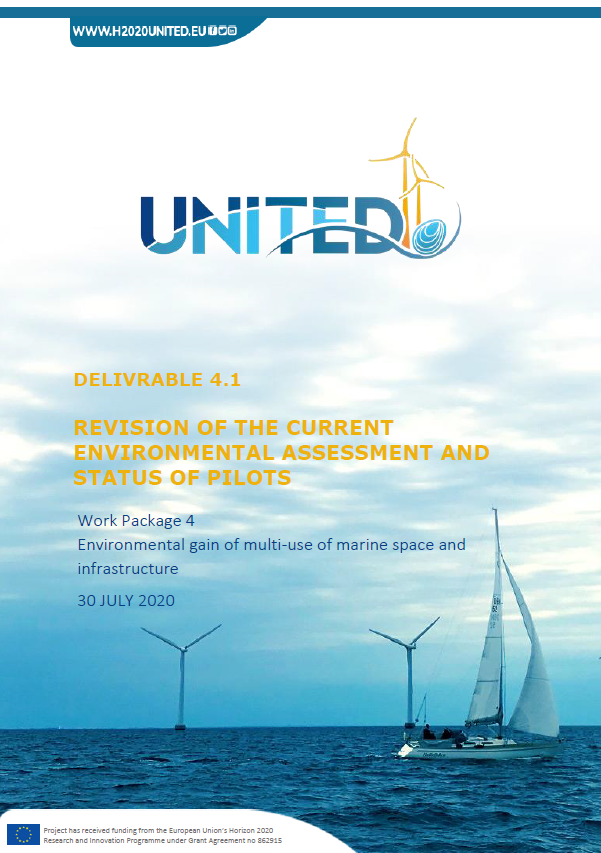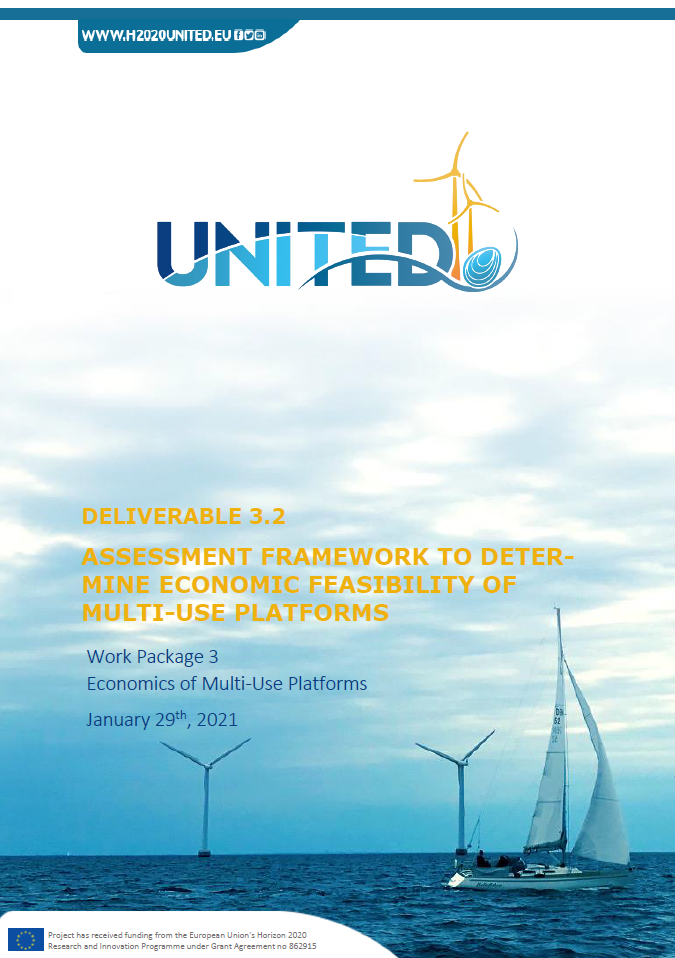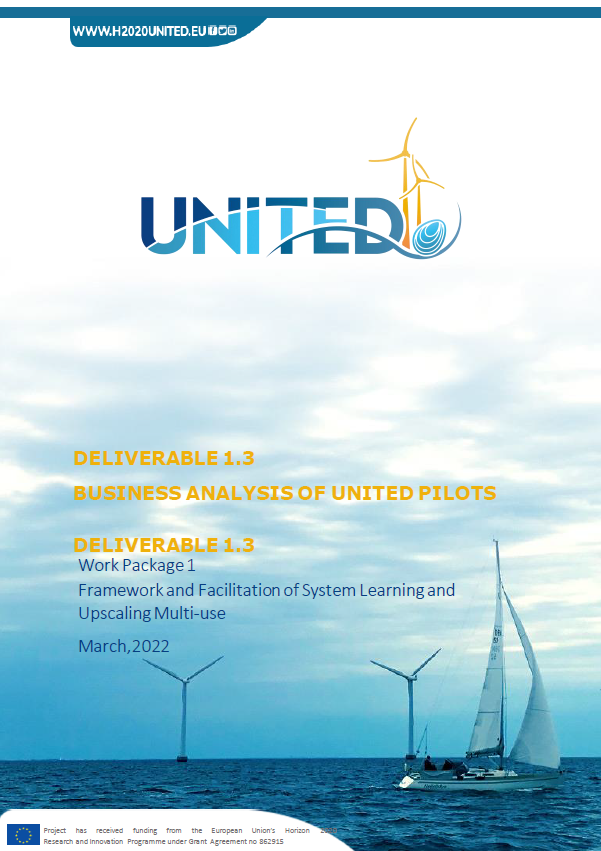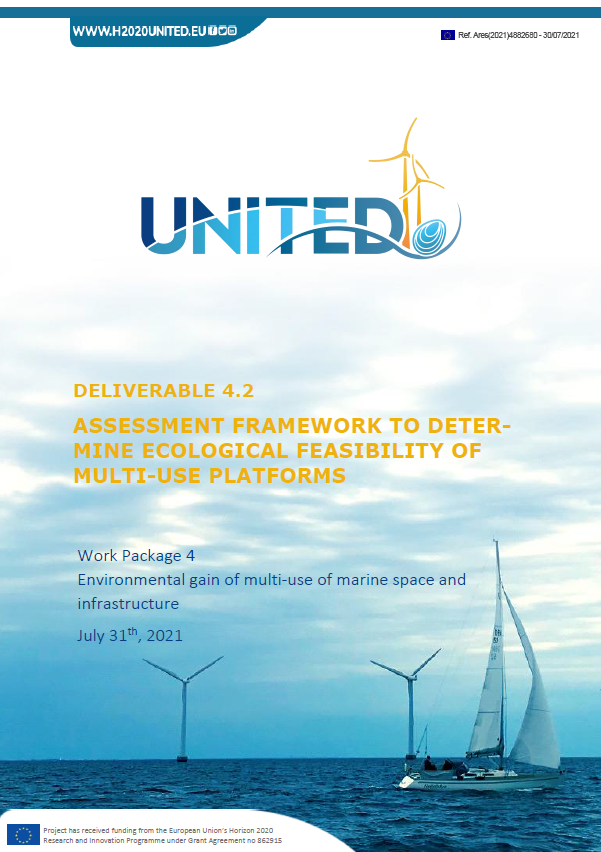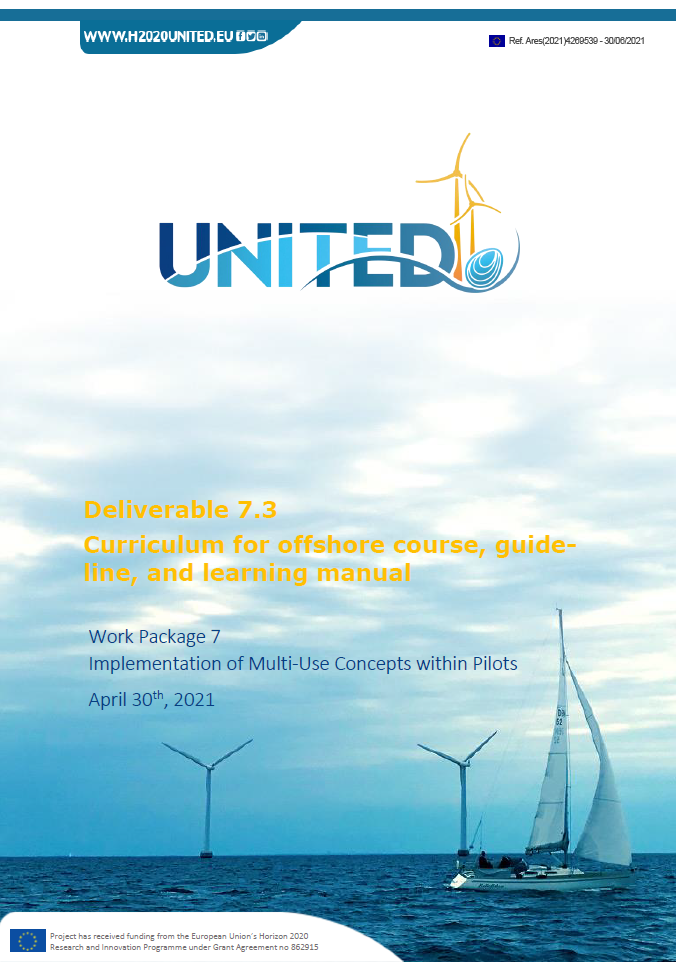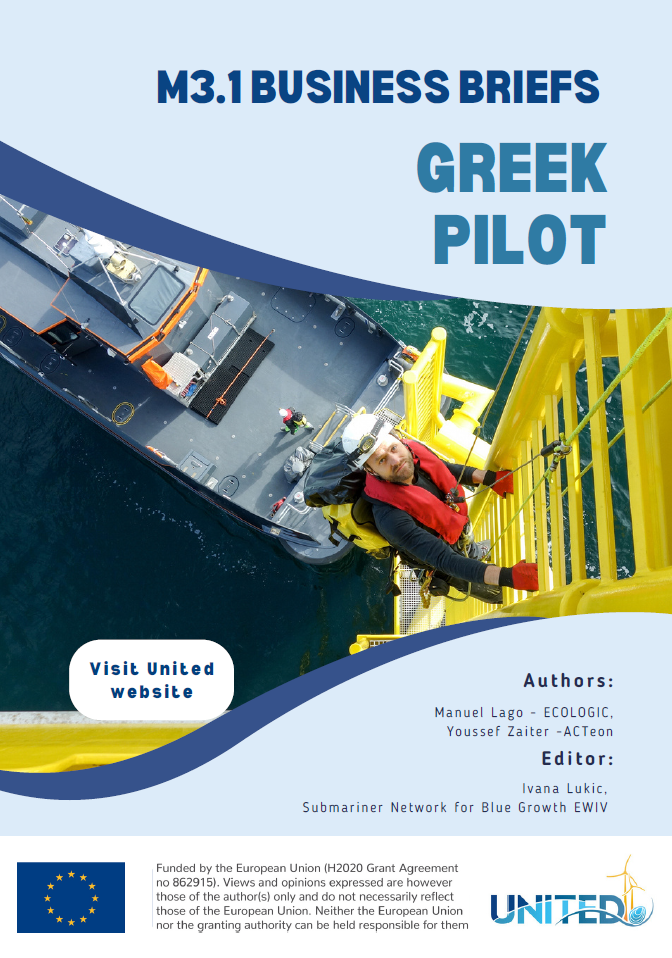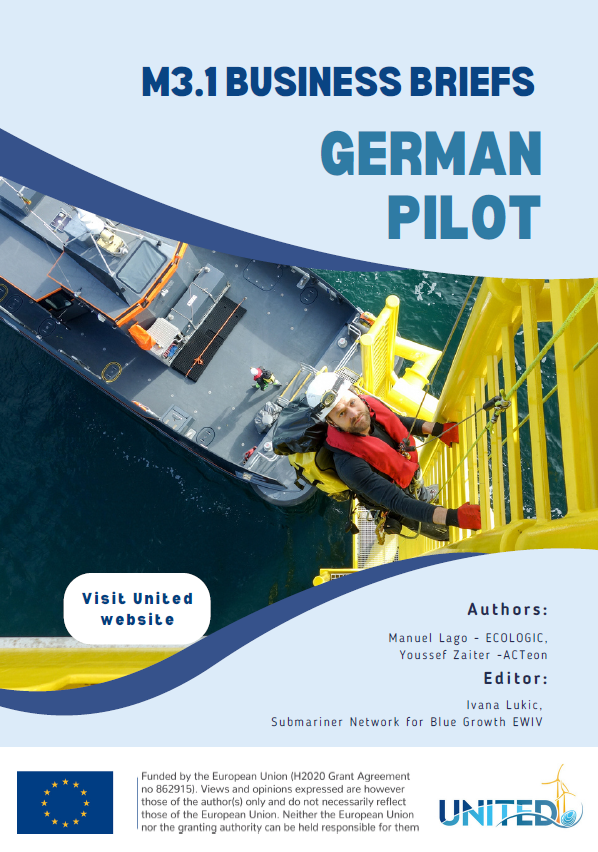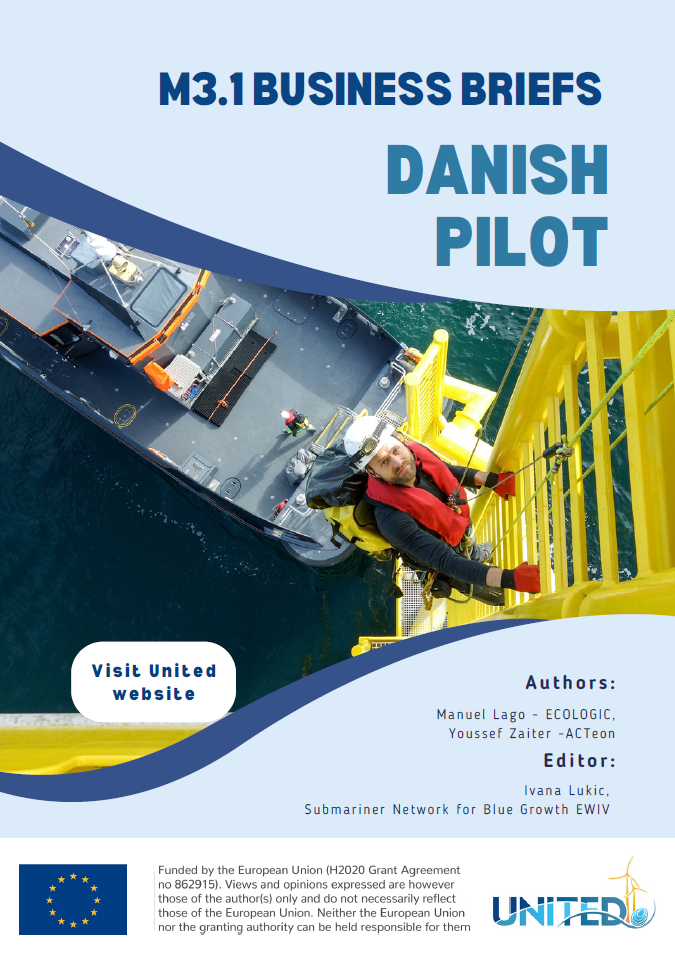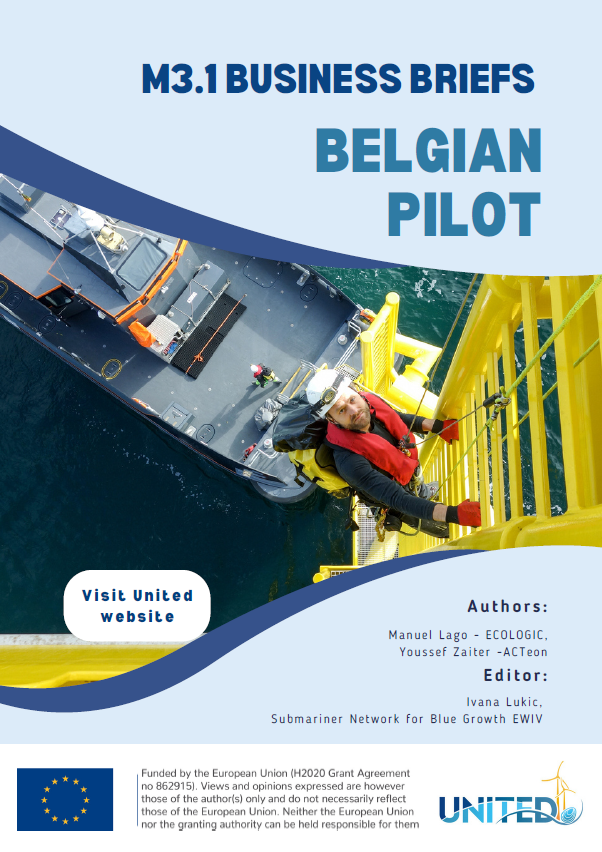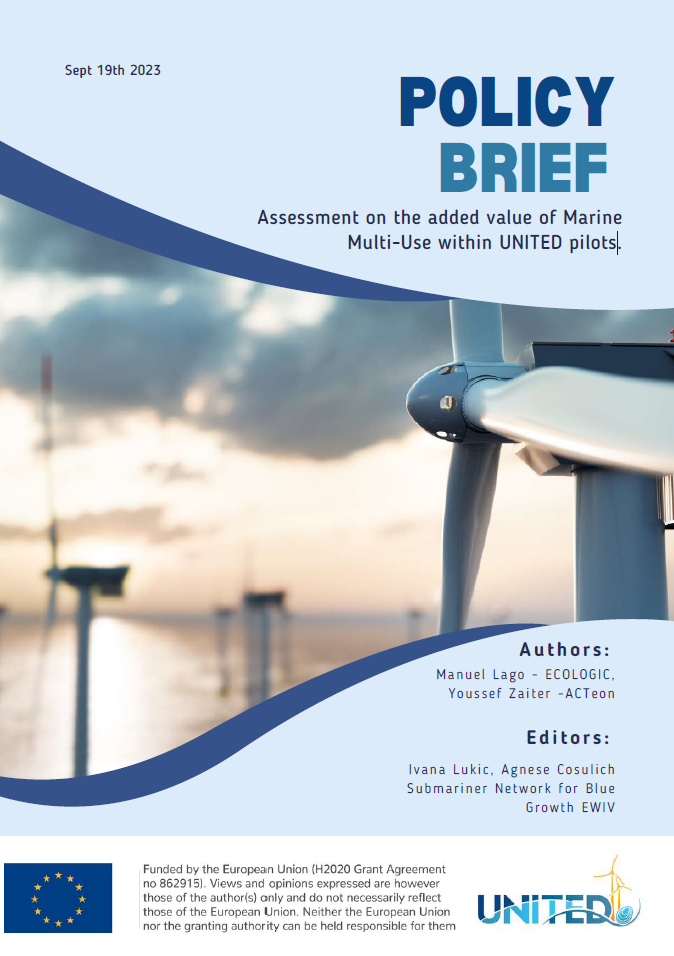Revision of the Current Environmental Assessment and Status of Pilots
- Publication
- Citation
Lukic, I. et al. 2020: Revision of the Current Environmental Assessment and Status of Pilots. Deliverable 4.1 of the Horizon 2020 project "Multi-use Offshore Platforms Demonstrators for Boosting Cost-effective and Eco-friendly Production in Sustainable Marine Activities" (UNITED).
The UNITED project report "Current Environmental Assessment and Status of the Pilots" provides a comprehensive overview of the current environmental assessments and status of various pilot projects. These projects included a variety of multi-use concepts in the marine environment, including the combination of offshore wind energy with shellfish and kelp cultivation, offshore wind and solar energy, shallow estuarine aquaculture and kelp cultivation, and tourism. The report looks at the environmental aspects of these pilot projects and assesses their environmental impacts, regulatory requirements and existing environmental assessment results and monitoring capacity.
Multi-use combination of aquaculture and tourism
A detailed analysis of the combination of aquaculture and tourism was carried out as part of the MUSES project for case studies in the eastern Atlantic (southern coast of mainland Portugal and the Azores) and in the northern Adriatic (Italian coast from Emilia Romagna to Veneto). A practical example is Piran Bay in Slovenia, where a fish farm (sea bass and mussel production) is located in a protected fishing area and nature park. The farm serves as a refuge for numerous fish and other marine organisms and fulfills a function similar to artificial underwater reefs or wrecks. In this context, tourist and educational activities are offered by the Piran Bay aquaculture operators.
Triplet multi-use combination in Piran Bay
A unique combination of aquaculture, tourism and environmental protection is practiced in Piran Bay. The operators of the fish farm participate in national and European research projects on environmental, biological and traceability issues of economically important fish species in the Portorož fishery protection area. This integration of educational and research activities could also be considered for the Greek pilot.
Conclusions for multi-use pilot projects
The report concludes that the Piran Bay pilot site is a unique maritime area where many factors need to be considered when implementing a multi-use approach. The environmental assessments carried out in this area provide important insights for similar multi-use projects.
